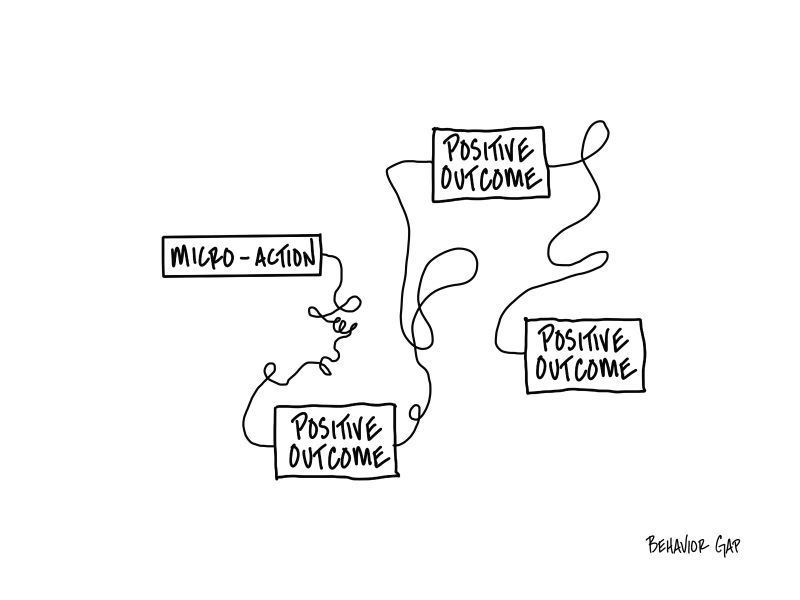
The contagious nature of micro-actions is magic.
Micro-actions are actions so small, so easy, that they hardly feel worth doing. When we think of things like this (if we ever do) we often think about how taking one small action, repeatedly, over long periods of time, adds up. It’s the compounding effect of incremental change, and it’s awesome.
But what I’m talking about is different. Maybe an example will help.
When I travel, I often don’t feel like exercising, but I know I’ll feel way better if I do. So, I take a micro-action. I put on my gym clothes and commit to walking to the hotel gym. That’s it. The trick I use to make it happen? I just say to myself, “I wonder what the gym in this hotel is like?”
Most of the time I arrive and decide to jump on the bike for five minutes. I tell myself that I’m doing it to get my body moving. That often turns into 20 minutes or more. I’m already there, so why not?
Then I think, since I’m warmed up, I might as well stretch. So there’s some more physical activity that’s good for me.
Afterward, when I go to breakfast, I find myself avoiding the sugary garbage and eating healthy. After all, I just went to the gym, so why ruin the good feeling? And at work, I find myself more focused and feel more confident in meetings.
Everything that happened at the gym itself is exactly what we’d expect. But the fact that I eat better and I’m more effective at work — that’s magic! And it isn’t just any magic. It’s the contagion that comes from taking a micro-action in one area of your life and watching it spread to other areas.
And all this just because I changed clothes and walked to the gym.
This column, titled The Magic of a Single Micro-Action, originally appeared in The New York Times on November 6, 2017.
. . .